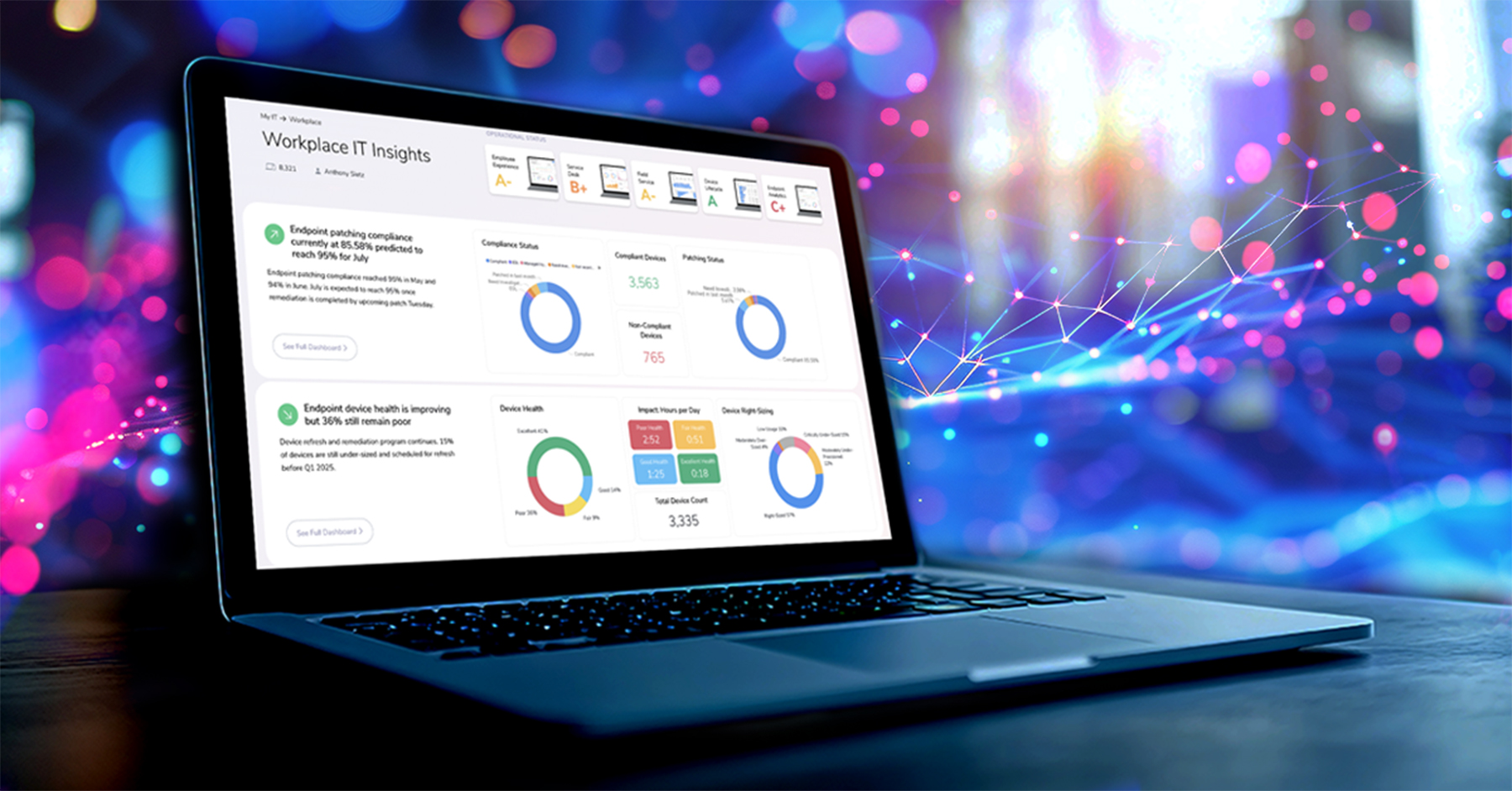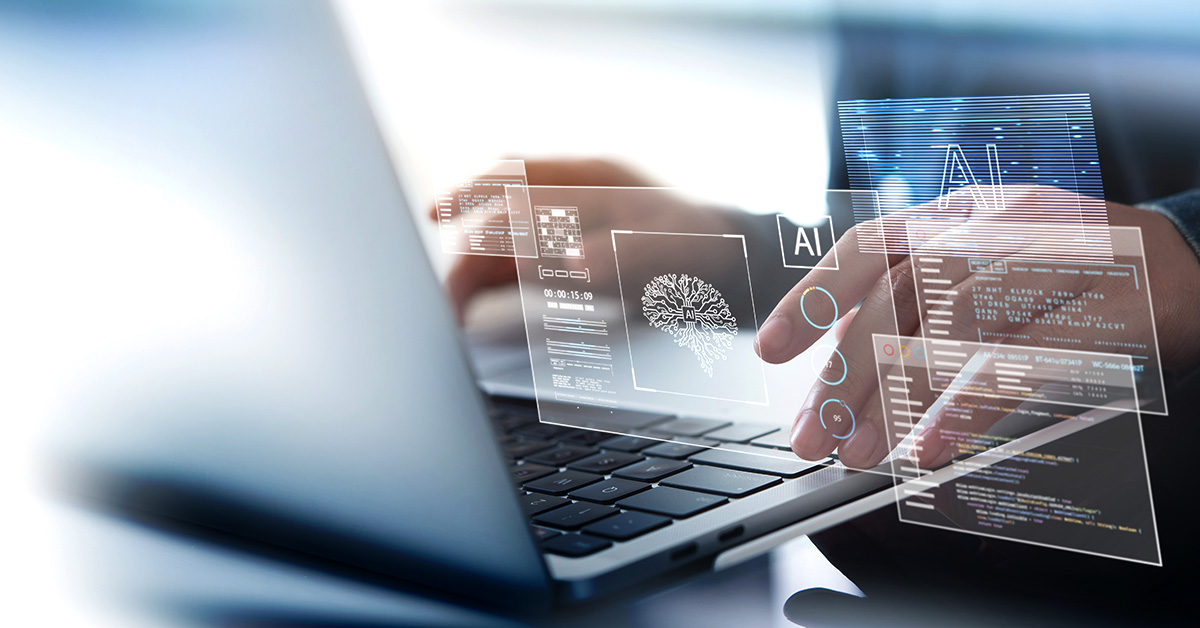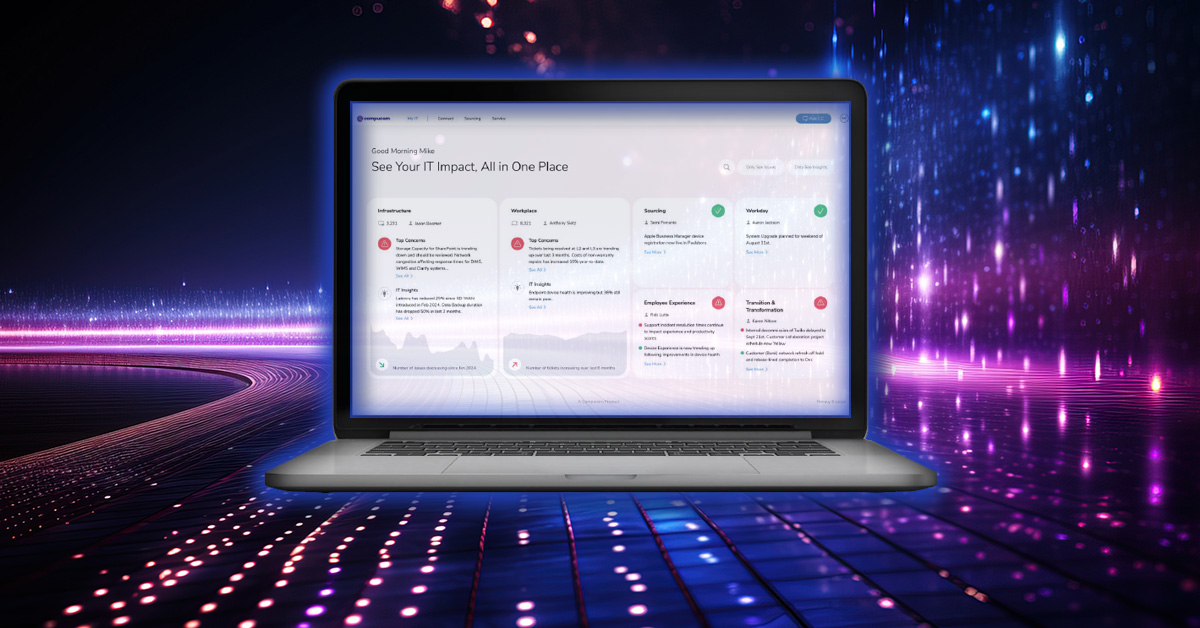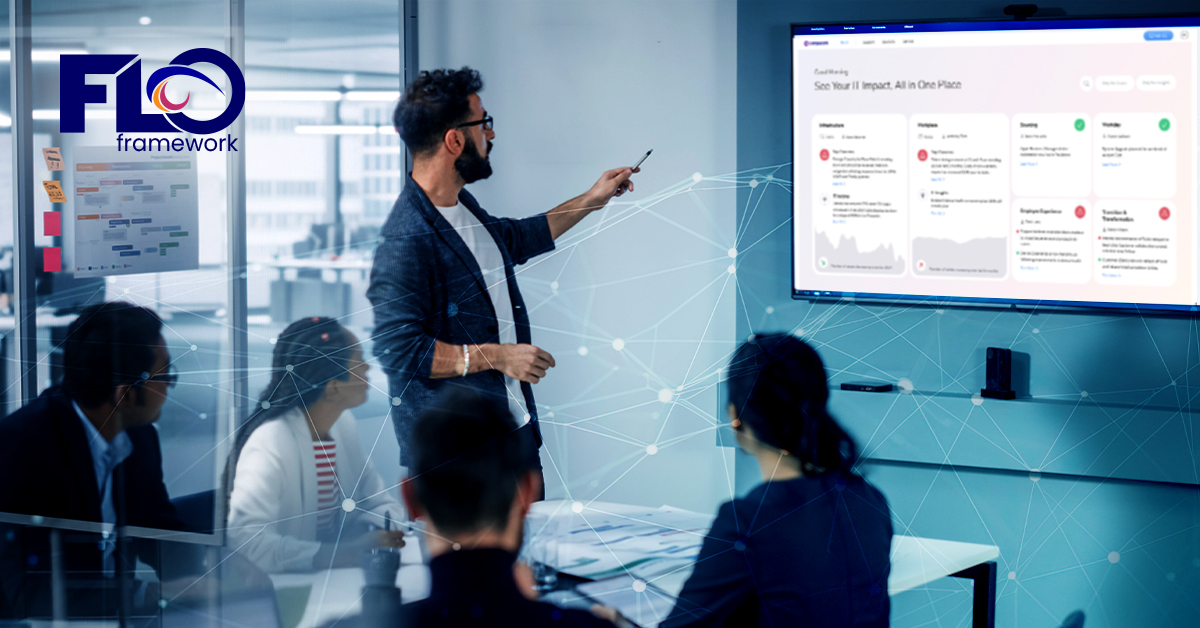- Endpoint Management
- Microsoft

More Reasons to Switch and How to Do It Smarter

Mark Hardy • Senior Consultant, Professional Services
Have you been dragging your feet when it comes to migrating to Windows 11? Many have, but adoption levels are now on the rise. As of June 2024, Windows 11 holds 29.7% of the worldwide Desktop Windows version market share, with Windows 10 sitting at 66.1%.
While you have until 2025 to make the switch (Microsoft will no longer support Windows 10 starting October 14, 2025), there are some compelling reasons for companies to make the switch sooner, including:
- Optimally planning hardware refreshes.
- Coordinating the update with the adoption of AI PCs.
- Taking the opportunity to introduce some digital transformation initiatives to help smooth migration.
- The appeal of ongoing upgrades to Windows 11 features.
With this in mind, here’s a quick overview of the upgrades to Windows 11 since its release, which aim to improve usability, performance, overall user experience, and, notably, security.
Evolution of Windows 11: A Look at the Latest Enhancements
Since its initial release on October 5, 2021, Windows 11 has undergone a series of updates and improvements based on user feedback and industry trends. Key changes that have been introduced since the original launch include:
PERFORMANCE OPTIMIZATIONS
- Improved Boot Times: Significant reductions in boot times ensure quicker access to the desktop from startup.
- Enhanced Resource Management: Better management of system resources translates to smoother multitasking and reduced latency.
PRODUCTIVITY ENHANCEMENTS
- Microsoft Teams Integration: Deeper integration with Microsoft Teams facilitates seamless communication and collaboration.
- Snap Layouts and Groups: New and improved Snap Layouts and Groups make it easier to organize and manage open windows, boosting productivity.
SYSTEM UPDATES AND MANAGEMENT
- Simplified Update Process: The update mechanism has been refined to be less disruptive, with smaller and faster updates.
- Enhanced Windows Update for Business: New policies and tools for businesses to control and deploy updates more effectively.
- Centralized Windows Security Center: A unified hub for managing security settings, including antivirus, firewall, and device health.
SUPPORT FOR LATEST HARDWARE
- Compatibility with New Processors: Support for the latest CPU technologies ensures users can leverage the full power of their hardware.
- Improved Battery Performance: Optimizations for battery life, particularly for laptops and tablets.
ECO-FRIENDLY FEATURES
- Energy-Efficient Settings: New settings and recommendations to reduce energy consumption and promote sustainability.
REFINED USER INTERFACE
- Taskbar Customization: Users now have greater flexibility in customizing the Taskbar, including the ability to move it to different screen positions and adjust icon sizes.
- Start Menu Enhancements: The Start Menu has seen improvements in organization and aesthetics, making it more intuitive and user-friendly.
- Dynamic Widgets: Enhanced widgets provide more personalized and real-time information directly on the desktop.
ACCESSIBILITY IMPROVEMENTS
- Voice Typing: Enhanced voice typing features for greater accessibility.
- Improved Visual Accessibility: Better support for high-contrast themes and screen readers.
Making it Easy to Stay Safe: New Security Features for Windows 11
As IT professionals, we put security front and center, and with good reason. In November 2023, Microsoft launched the Secure Future Initiative (SFI) in preparation for the increasing scale and impact of cyberattacks.
“…we’ve not only built new security features into Windows 11, but we’ve also doubled down on security features that will be turned on by default. Our goal remains simple: make it easy to stay safe with Windows.“
David Weston, Vice President of Enterprise and OS Security at Microsoft
Microsoft’s Windows 11 introduces an array of advanced security features designed to address evolving cyber threats and protect users. Key highlights include:
ADVANCED PHISHING PROTECTION:
- Identifies and warns users about potential phishing attempts in real time.
- Blocks malicious attempts by analyzing email content and suspicious links.
- AI integration ensures continuous learning and improved detection capabilities.
IMPROVED APPLICATION CONTROL:
- IT administrators can establish strict rules for app usage within an organization.
- Safelisting approved apps and blocking unauthorized ones reduces malware risk.
- Ensures only trusted applications access critical systems and data.
ROBUST DATE ENCRYPTION:
- Protects sensitive information from unauthorized access.
- Utilizes encryption standards like BitLocker and Windows Information Protection.
- Secures data both at rest and in transit.
AI AND MACHINE LEARNING IN THREAT DETECTION:
- Leverages AI for efficient and accurate threat identification and response.
- Machine learning algorithms detect patterns and anomalies indicating threats.
- Proactively predicts and mitigates threats to reduce cyberattack impact.
SECURITY BASELINES AND POLICY CONTROLS:
- Pre-configured security settings align with industry best practices.
- IT administrators enforce consistent security policies across the organization.
- Reduces risks of vulnerabilities and misconfigurations.
ENHANCED WINDOWS SECURITY CENTER:
- A centralized hub for managing and monitoring security settings.
- Allows easy access to configure antivirus protection, firewall, and device health.
- Provides real-time alerts and notifications for prompt risk mitigation.
COLLABORATIVE APPROACH TO CYBERSECURITY:
- Microsoft works with industry partners, security researchers, and government agencies.
- Regular security patches and updates address known vulnerabilities.
- Commitment to protecting users against the latest cyber threats.
These enhancements demonstrate Microsoft’s dedication to providing a secure environment across Windows 11, ensuring users can confidently navigate the digital landscape.
Plan for Smarter Migration to Windows 11
Overall, this update is less labor-intensive than past releases, and users will find the Windows 11 interface intuitive, making the move seamless for most organizations. Your company also has the option to deploy Windows 11 devices alongside Windows 10 devices, making it easier to do a phased roll-out.
I find capability and compatibility are the larger concerns. You can upgrade existing machines to Windows 11 now if they meet the minimum hardware and software requirements. But what about older endpoints?
IT departments should flag non-compatible devices and replace them as part of their regular refresh cycle before 2025. We can help you plan for this, including helping you determine whether investing in AI PCs is right for your business.
You may also want to consider coordinating some digital transformation initiatives to help smooth migration, such as modern endpoint management (spoiler alert — they’ll also improve the efficiency of your IT infrastructure and potentially drive down costs).
At a minimum, it’s essential to understand whether your currently deployed devices are compatible so you can start device refresh planning. There’s still time to transition. However, recent updates emphasize the urgency to transition as new features and enhancements are progressively added to Windows 11’s ecosystem.
I recommend switching over soon and completing an enterprise-wide Windows 11 readiness assessment before you do. We can tailor a workshop agenda to your organization and get you an actionable roadmap to support a seamless transition.
Want to learn more or schedule an assessment? Click Here
RecenT

9 Ways Strategic IT Staffing Empowers Organizations

Case Studies: Asset Intelligence and Endpoint Compliance Made Easy

AI and the Enterprise: The Future of IT Management

Exploring the Opportunities and Obstacles of AI in the Enterprise

One Dashboard to Rule Them All: Strategic IT Excellence with Full Lifecycle Observability

Transforming IT Operations with Full Lifecycle Observability: How Compucom’s FLO Framework Redefines Data-Driven Efficiency
TOPICS
What’s New with Windows 11
- Endpoint Management
- Microsoft
More Reasons to Switch and How to Do It Smarter

Mark Hardy • Senior Consultant, Professional Services
Have you been dragging your feet when it comes to migrating to Windows 11? Many have, but adoption levels are now on the rise. As of June 2024, Windows 11 holds 29.7% of the worldwide Desktop Windows version market share, with Windows 10 sitting at 66.1%.
While you have until 2025 to make the switch (Microsoft will no longer support Windows 10 starting October 14, 2025), there are some compelling reasons for companies to make the switch sooner, including:
- Optimally planning hardware refreshes.
- Coordinating the update with the adoption of AI PCs.
- Taking the opportunity to introduce some digital transformation initiatives to help smooth migration.
- The appeal of ongoing upgrades to Windows 11 features.
With this in mind, here’s a quick overview of the upgrades to Windows 11 since its release, which aim to improve usability, performance, overall user experience, and, notably, security.
Evolution of Windows 11: A Look at the Latest Enhancements
Since its initial release on October 5, 2021, Windows 11 has undergone a series of updates and improvements based on user feedback and industry trends. Key changes that have been introduced since the original launch include:
PERFORMANCE OPTIMIZATIONS
- Improved Boot Times: Significant reductions in boot times ensure quicker access to the desktop from startup.
- Enhanced Resource Management: Better management of system resources translates to smoother multitasking and reduced latency.
PRODUCTIVITY ENHANCEMENTS
- Microsoft Teams Integration: Deeper integration with Microsoft Teams facilitates seamless communication and collaboration.
- Snap Layouts and Groups: New and improved Snap Layouts and Groups make it easier to organize and manage open windows, boosting productivity.
SYSTEM UPDATES AND MANAGEMENT
- Simplified Update Process: The update mechanism has been refined to be less disruptive, with smaller and faster updates.
- Enhanced Windows Update for Business: New policies and tools for businesses to control and deploy updates more effectively.
- Centralized Windows Security Center: A unified hub for managing security settings, including antivirus, firewall, and device health.
SUPPORT FOR LATEST HARDWARE
- Compatibility with New Processors: Support for the latest CPU technologies ensures users can leverage the full power of their hardware.
- Improved Battery Performance: Optimizations for battery life, particularly for laptops and tablets.
ECO-FRIENDLY FEATURES
- Energy-Efficient Settings: New settings and recommendations to reduce energy consumption and promote sustainability.
REFINED USER INTERFACE
- Taskbar Customization: Users now have greater flexibility in customizing the Taskbar, including the ability to move it to different screen positions and adjust icon sizes.
- Start Menu Enhancements: The Start Menu has seen improvements in organization and aesthetics, making it more intuitive and user-friendly.
- Dynamic Widgets: Enhanced widgets provide more personalized and real-time information directly on the desktop.
ACCESSIBILITY IMPROVEMENTS
- Voice Typing: Enhanced voice typing features for greater accessibility.
- Improved Visual Accessibility: Better support for high-contrast themes and screen readers.
Making it Easy to Stay Safe: New Security Features for Windows 11
As IT professionals, we put security front and center, and with good reason. In November 2023, Microsoft launched the Secure Future Initiative (SFI) in preparation for the increasing scale and impact of cyberattacks.
“…we’ve not only built new security features into Windows 11, but we’ve also doubled down on security features that will be turned on by default. Our goal remains simple: make it easy to stay safe with Windows.“
David Weston, Vice President of Enterprise and OS Security at Microsoft
Microsoft’s Windows 11 introduces an array of advanced security features designed to address evolving cyber threats and protect users. Key highlights include:
ADVANCED PHISHING PROTECTION:
- Identifies and warns users about potential phishing attempts in real time.
- Blocks malicious attempts by analyzing email content and suspicious links.
- AI integration ensures continuous learning and improved detection capabilities.
IMPROVED APPLICATION CONTROL:
- IT administrators can establish strict rules for app usage within an organization.
- Safelisting approved apps and blocking unauthorized ones reduces malware risk.
- Ensures only trusted applications access critical systems and data.
ROBUST DATE ENCRYPTION:
- Protects sensitive information from unauthorized access.
- Utilizes encryption standards like BitLocker and Windows Information Protection.
- Secures data both at rest and in transit.
AI AND MACHINE LEARNING IN THREAT DETECTION:
- Leverages AI for efficient and accurate threat identification and response.
- Machine learning algorithms detect patterns and anomalies indicating threats.
- Proactively predicts and mitigates threats to reduce cyberattack impact.
SECURITY BASELINES AND POLICY CONTROLS:
- Pre-configured security settings align with industry best practices.
- IT administrators enforce consistent security policies across the organization.
- Reduces risks of vulnerabilities and misconfigurations.
ENHANCED WINDOWS SECURITY CENTER:
- A centralized hub for managing and monitoring security settings.
- Allows easy access to configure antivirus protection, firewall, and device health.
- Provides real-time alerts and notifications for prompt risk mitigation.
COLLABORATIVE APPROACH TO CYBERSECURITY:
- Microsoft works with industry partners, security researchers, and government agencies.
- Regular security patches and updates address known vulnerabilities.
- Commitment to protecting users against the latest cyber threats.
These enhancements demonstrate Microsoft’s dedication to providing a secure environment across Windows 11, ensuring users can confidently navigate the digital landscape.
Plan for Smarter Migration to Windows 11
Overall, this update is less labor-intensive than past releases, and users will find the Windows 11 interface intuitive, making the move seamless for most organizations. Your company also has the option to deploy Windows 11 devices alongside Windows 10 devices, making it easier to do a phased roll-out.
I find capability and compatibility are the larger concerns. You can upgrade existing machines to Windows 11 now if they meet the minimum hardware and software requirements. But what about older endpoints?
IT departments should flag non-compatible devices and replace them as part of their regular refresh cycle before 2025. We can help you plan for this, including helping you determine whether investing in AI PCs is right for your business.
You may also want to consider coordinating some digital transformation initiatives to help smooth migration, such as modern endpoint management (spoiler alert — they’ll also improve the efficiency of your IT infrastructure and potentially drive down costs).
At a minimum, it’s essential to understand whether your currently deployed devices are compatible so you can start device refresh planning. There’s still time to transition. However, recent updates emphasize the urgency to transition as new features and enhancements are progressively added to Windows 11’s ecosystem.
I recommend switching over soon and completing an enterprise-wide Windows 11 readiness assessment before you do. We can tailor a workshop agenda to your organization and get you an actionable roadmap to support a seamless transition.
Want to learn more or schedule an assessment? Click Here
Recent Blogs

9 Ways Strategic IT Staffing Empowers Organizations

Case Studies: Asset Intelligence and Endpoint Compliance Made Easy

AI and the Enterprise: The Future of IT Management

Exploring the Opportunities and Obstacles of AI in the Enterprise

One Dashboard to Rule Them All: Strategic IT Excellence with Full Lifecycle Observability




